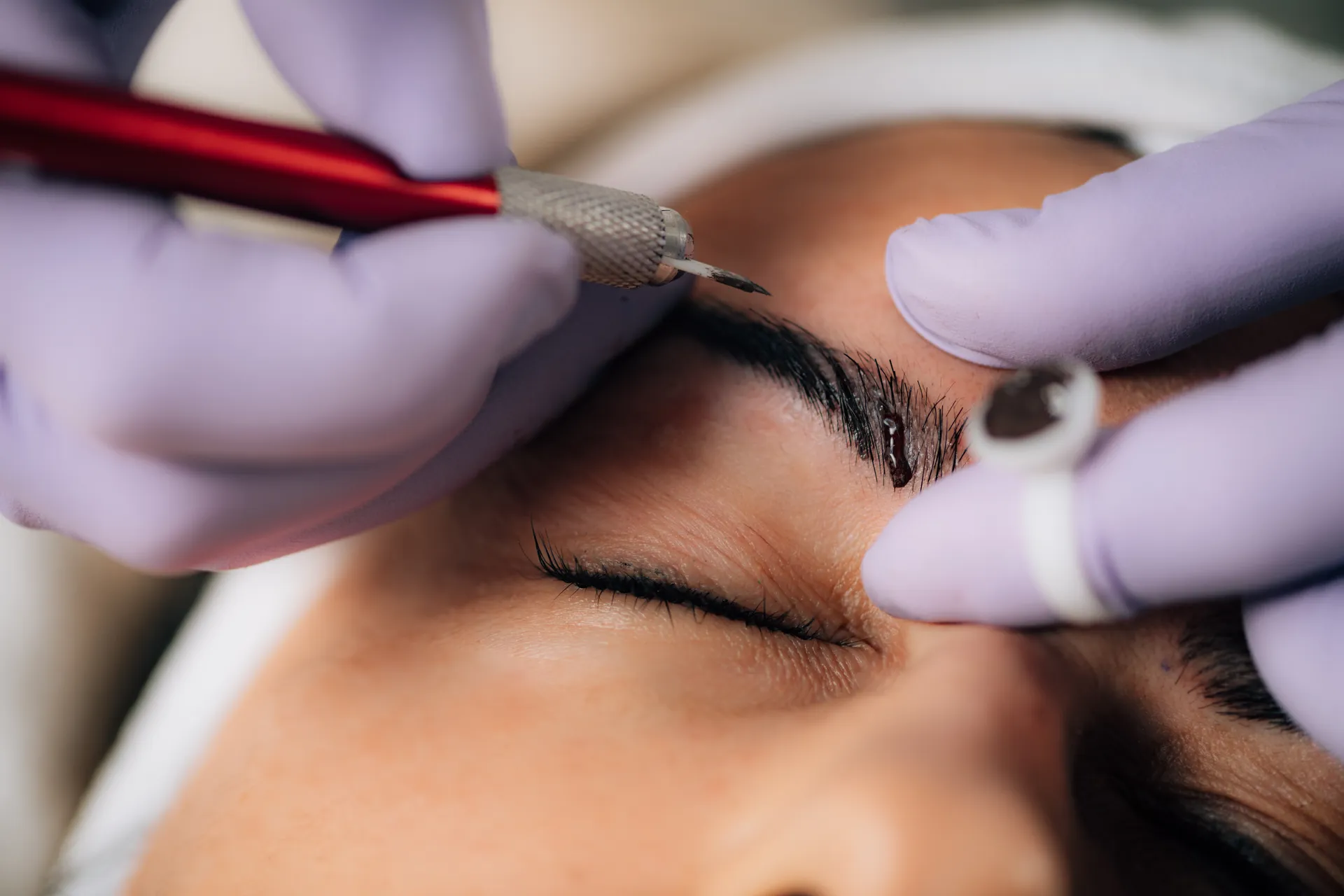Semi Permanent Make-Up
Semi-permanent makeup, also known as micropigmentation or cosmetic tattooing, is a sophisticated cosmetic procedure that involves implanting specialized pigments into the upper layers of the skin. Its purpose is to enhance facial features, mimic the appearance of traditional cosmetics, and create long-lasting, natural-looking definition. Far more than a simple tattoo, this technique has evolved into an art form, offering solutions for everything from perfectly sculpted eyebrows to subtly defined lips and eyes. Its rising popularity stems from its ability to provide a smudge-proof, waterproof, and time-saving alternative to the daily ritual of applying makeup, appealing to a wide range of individuals seeking convenience and confidence.
The Science Behind the Art: Micropigmentation
The fundamental principle of semi-permanent makeup is the precise deposition of pigment into the dermal layer of the skin. However, it is critically different from traditional body tattooing in several key aspects. The primary distinction lies in the depth of pigment implantation. While traditional tattoos deposit ink deep into the dermis for permanence, semi-permanent makeup places pigment in the upper region of the dermis. This shallower placement means the pigment is gradually broken down and exfoliated away as the skin cells naturally regenerate over time, which is why the results are “semi-permanent” rather than permanent.
The pigments used are also different. Cosmetic pigments are specifically formulated for use on the face. They are typically iron oxide-based, which the body can safely absorb over time. These pigments are designed to fade softly into more muted tones, unlike traditional tattoo inks that can sometimes fade to undesirable blue or green shades. The tools used are also highly specialized, ranging from digital machines with ultra-fine, single-use needles for creating shaded effects to manual, handheld tools used for techniques like microblading.
An In-Depth Look at Common Procedures
Semi-permanent makeup can be applied to several areas of the face, with techniques tailored to achieve specific aesthetic goals.
Eyebrows: The Frame of the Face
Well-shaped eyebrows frame the eyes and bring balance to the entire face. Semi-permanent techniques offer a solution for sparse, uneven, or non-existent brows.
-
Microblading: This popular manual technique uses a handheld tool with a configuration of tiny needles to etch fine, hair-like strokes into the skin. These strokes mimic the appearance of natural eyebrow hair, creating a very natural, textured look. Microblading is generally best suited for individuals with normal to dry skin, as the strokes can blur or fade more quickly on oily skin types.
-
Ombre or Powder Brows: This method uses a digital machine to create a soft, pixelated effect that resembles the look of powdered eyebrow makeup. The result is typically lighter at the front of the brow and gradually darkens towards the tail, creating a beautiful ombré effect. This technique is suitable for all skin types, including oily skin, and tends to last longer than microblading.
-
Combination Brows: As the name suggests, this technique combines the best of both worlds. It typically involves creating hair strokes with microblading at the front of the brow for a natural start, then blending into machine shading through the body and tail of the brow for added definition and fullness.
 Eyeliner: Defining the Eyes
Eyeliner: Defining the Eyes
Semi-permanent eyeliner eliminates the daily struggle of achieving a perfect, symmetrical line and the worry of smudging.
-
Lash Line Enhancement: This is the most subtle option. Pigment is carefully implanted directly between the lashes along the lash line. It doesn’t look like eyeliner but creates the illusion of a darker, fuller lash base, making the eyes pop in a very natural way.
-
Classic Eyeliner: This creates a more distinct line just above the lash line, mimicking the look of a traditional pencil or liquid liner. The thickness can be customized from a thin, elegant line to a bolder, more defined look.
-
Winged or Designer Eyeliner: This involves extending the eyeliner outwards into a “wing” or “flick.” While it can create a dramatic look, it requires careful consideration, as skin elasticity changes with age, which can alter the position and appearance of the wing over time.
Lips: Enhancing Color and Shape
Semi-permanent lip treatments can restore color to pale lips, correct asymmetry, and define the lip border for a fuller, more youthful appearance.
-
Lip Blushing: This is the most sought-after lip procedure. It involves depositing a sheer wash of color across the entire lip, enhancing the natural lip tone and defining the shape. The goal is not to create a heavy, lipstick-like effect but rather a soft, natural-looking tint that restores a healthy glow.
-
Full Lip Color: This technique provides a more saturated, opaque color, similar to wearing lipstick. It offers a bolder and more dramatic result than lip blushing.
The Journey: From Consultation to Complete Healing
The semi-permanent makeup process is meticulous and involves several stages to ensure a safe and beautiful outcome.
-
The Consultation: This is a crucial first step. During the consultation, you will discuss your aesthetic goals, color preferences, and desired shape with the artist. The artist will assess your skin type, discuss your medical history to identify any contraindications, and perform a patch test for allergies. They will then meticulously map out the proposed shape on your face with a makeup pencil for your approval before any pigment is applied.
-
The Procedure: Once the design is approved, a topical anesthetic cream is applied to the treatment area to minimize discomfort. The artist then uses their specialized tool to gently implant the pigment into the skin. The process can take anywhere from one to three hours, depending on the complexity of the procedure.
-
The Healing Process: Proper aftercare is essential for optimal results. The healing journey follows a predictable pattern. For the first few days, the treated area will appear darker and bolder than the final result, and minor swelling and tenderness are normal. Around day five, the area will begin to form light scabs and flake. It is imperative not to pick or scratch these scabs, as this can pull out the pigment and lead to patchy results. As the skin heals, the color will appear to lighten significantly, sometimes seeming to disappear altogether. Over the following weeks, the pigment will gradually “bloom” back to the surface, settling into its final, softer shade by the four- to six-week mark.
-
The Perfection Touch-Up: A follow-up appointment, often called a “perfection session,” is scheduled for 6–8 weeks after the initial procedure. This session is essential for perfecting the final look. The artist will assess the healed results, fill in any areas where the pigment may have healed lighter, and make any minor adjustments to the shape or color needed to ensure a flawless finish.
Longevity, Benefits, and Important Considerations
While often called “permanent,” these treatments are designed to fade over time. The longevity of the results typically ranges from one to three years for eyebrows and two to five years for eyeliner and lips. This duration is influenced by factors such as skin type (oily skin tends to break down pigment faster), sun exposure, and the use of certain skincare products like retinoids and chemical exfoliants. Periodic “color boost” appointments are recommended every 1–2 years to maintain the vibrancy of the results.
The benefits extend beyond mere convenience. Semi-permanent makeup can be life-changing for individuals with alopecia or hair loss from chemotherapy, those with physical limitations like poor vision or unsteady hands that make makeup application difficult, and athletes who want a look that withstands sweat and activity. However, it is vital to be aware of the risks, which include infection from unsterile equipment, allergic reactions, scarring from an inexperienced technician, and the possibility of unsatisfactory results. Therefore, the single most important factor for a successful outcome is choosing a highly qualified, certified, and experienced artist who works in a clean, professional environment.

